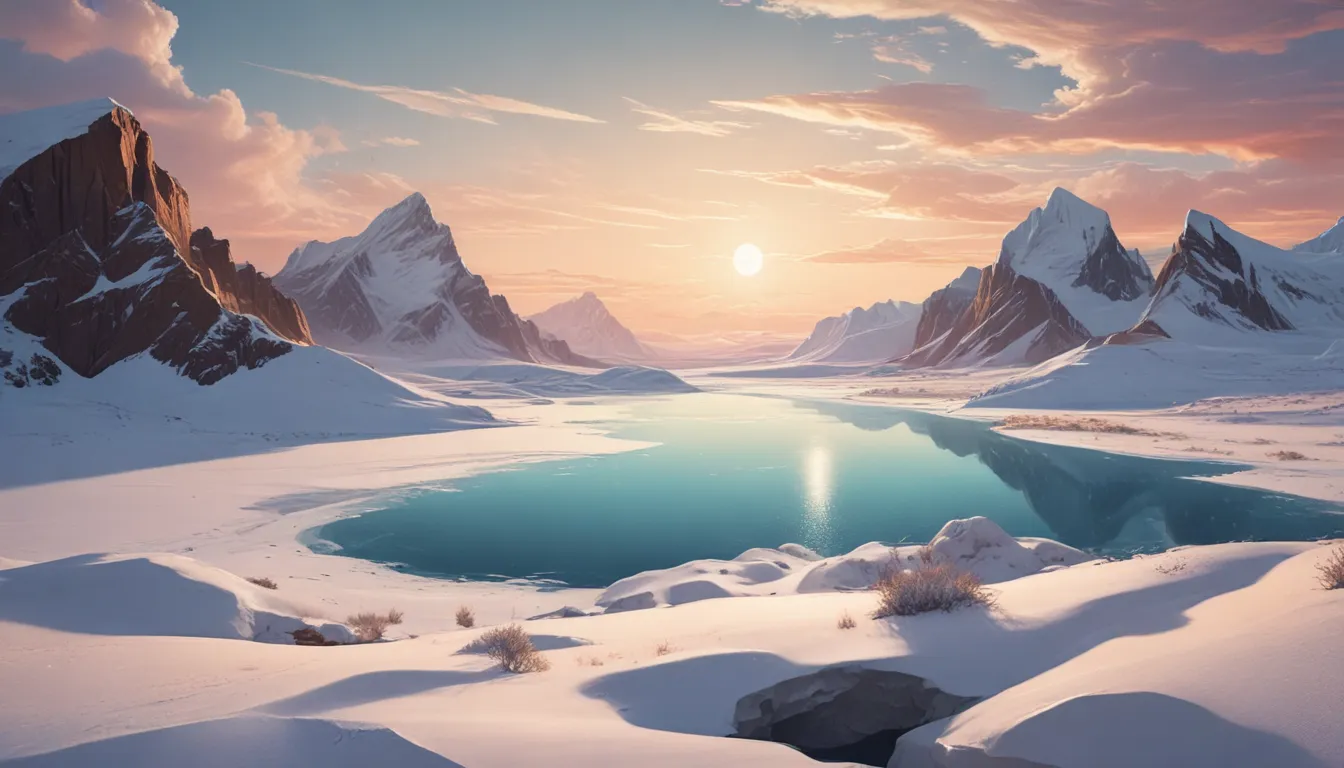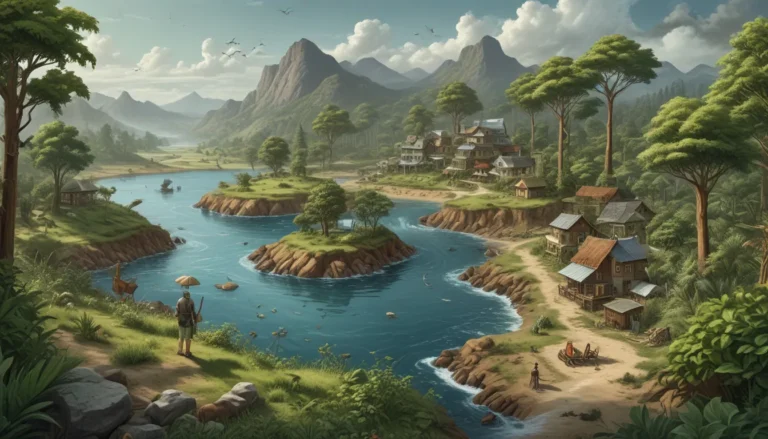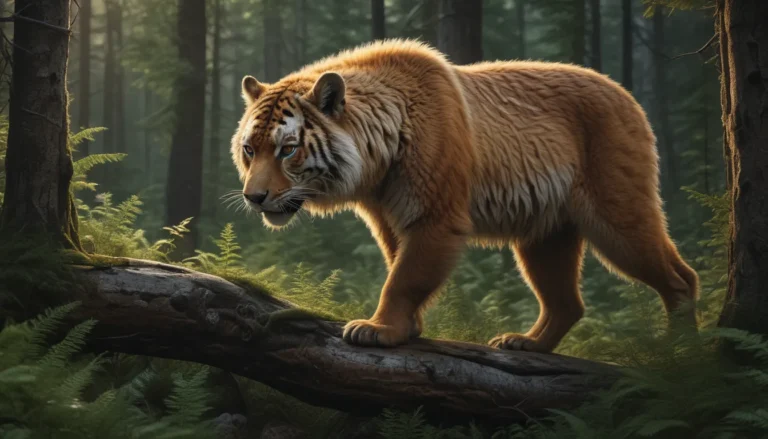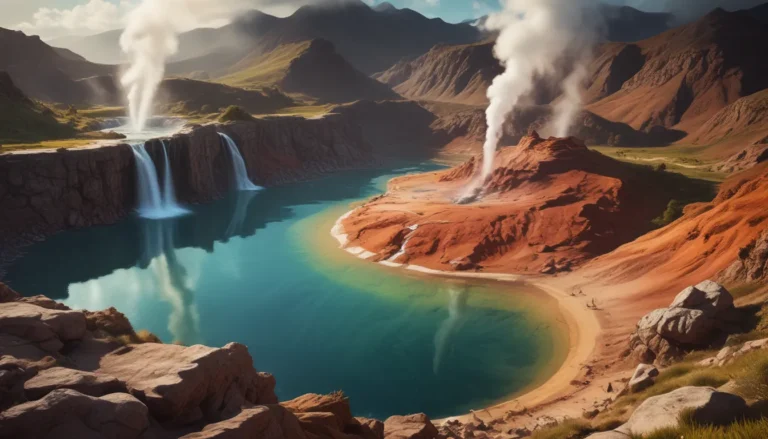A Note About Images: The images used in our articles are for illustration purposes only and may not exactly match the content. They are meant to engage readers, but the text should be relied upon for accurate information.
Polar deserts are not only frozen landscapes but also unique ecosystems teeming with surprising biodiversity and stunning ice formations. These captivating environments, found in the Arctic and Antarctica, hold a wealth of interesting facts and phenomena waiting to be discovered. Let’s embark on an educational journey to uncover 12 fascinating facts about polar deserts, from their extreme conditions to the remarkable adaptations of the wildlife that inhabit them.
Delving into the World of Polar Deserts
Polar deserts are renowned for being the coldest and driest places on Earth, characterized by their harsh environments and vast icy landscapes. These desolate regions cover immense territories, spanning approximately 5.5 million square miles in the Antarctic desert and 5.4 million square miles in the Arctic desert. Despite their frigid temperatures, polar deserts are home to surprising biodiversity, hosting a variety of plant and animal species uniquely adapted to survive in these extreme conditions.
The Unique Day and Night Patterns of Polar Deserts
Proximity to the poles grants polar deserts with distinct day and night patterns. During the winter months, these regions endure prolonged darkness known as polar night, while the summer months bring extended periods of daylight known as polar day. These unique light cycles contribute to the resilience and adaptations of the flora and fauna found in polar deserts.
Surprising Biodiversity Thriving in Extreme Conditions
One of the most intriguing aspects of polar deserts is the surprising biodiversity that exists within them. Despite the challenging environment, mosses, lichens, small shrubs, and hardy grasses can be found thriving in the icy landscapes. Animals such as polar bears, Arctic foxes, penguins, and various bird species have also adapted to survive in these harsh conditions. This resilience showcases the remarkable ability of life to thrive in even the most extreme environments.
Preserving Ancient Fossils: A Window into Earth’s Past
The desolate landscapes of polar deserts hold a hidden treasure in the form of ancient fossils. Paleontologists have unearthed fossils dating back millions of years, providing valuable insights into Earth’s prehistoric past and the evolution of life on our planet. The preserved remains found in polar deserts offer a glimpse into a bygone era and contribute to our understanding of the history of life on Earth.
Stunning Ice Formations Shaping the Polar Deserts
The extreme cold temperatures prevalent in polar deserts give rise to breathtaking ice formations that captivate explorers and nature enthusiasts alike. From towering icebergs in Antarctica to intricate ice caves in the Arctic, these frozen landscapes showcase the beauty and power of nature. These stunning ice formations not only add to the aesthetic appeal of polar deserts but also play a vital role in shaping the environment and providing habitats for unique wildlife.
The Vital Role of Polar Deserts in Scientific Research
Polar deserts serve as invaluable research sites for scientists studying a myriad of topics, including climate change, glaciology, and biodiversity. These pristine environments offer a wealth of data that contributes to our understanding of Earth’s ecosystems and the impact of human activities on the planet. The research conducted in polar deserts plays a crucial role in advancing scientific knowledge and addressing pressing environmental issues facing our world.
Unveiling the Melting Mysteries of Polar Deserts
While polar deserts are known for their icy landscapes, they can also experience melting during warmer seasons. These melting events can lead to the formation of temporary lakes and rivers, bringing a burst of life to the seemingly barren landscapes. The temporary transformation of polar deserts highlights the dynamic nature of these environments and the interconnectedness of various ecological processes.
Embracing the Pristine Beauty of Polar Deserts
The stunning natural beauty that surrounds polar deserts is a sight to behold, from snow-capped peaks to expansive ice shelves and frozen plains. These untouched landscapes serve as a reminder of the untouched beauty of our planet and the importance of preserving and protecting such pristine environments. The awe-inspiring scenery of polar deserts inspires a sense of reverence for the natural world and encourages us to appreciate the wonders of our planet.
Navigating the Challenges of Exploring Polar Deserts
Exploring polar deserts is a formidable endeavor that requires careful planning, specialized equipment, and expert guidance. The harsh weather conditions, treacherous terrain, and isolation of these regions make them extremely challenging to navigate. Only equipped and trained explorers can venture into these remote and unforgiving territories, where every step brings new discoveries and challenges.
Understanding the Global Impact of Polar Deserts
The role of polar deserts extends beyond their icy landscapes, playing a crucial role in regulating global climate patterns. The ice, snow, and unique ecosystems found in these regions contribute to the Earth’s overall temperature balance. Any changes in polar deserts can have far-reaching effects on climate systems worldwide, underscoring the importance of preserving these delicate environments for the well-being of our planet.
Conclusion: Embracing the Wonder of Polar Deserts
In conclusion, polar deserts are captivating ecosystems that offer a glimpse into a world of extreme conditions and unique adaptations. The 12 fascinating facts about polar deserts presented here shed light on the diverse and dynamic nature of these frozen landscapes. From the surprising biodiversity and ancient fossils to the stunning ice formations and vital scientific research conducted in these regions, polar deserts continue to intrigue and inspire those who explore them.
While polar deserts may seem barren and inhospitable at first glance, they are rich in beauty, diversity, and ecological significance. These enigmatic ecosystems serve as a reminder of the resilience and adaptability of life in the face of extreme conditions. As we continue to study, explore, and protect polar deserts, we unlock new insights into the workings of our planet and the interconnectedness of all living beings.
FAQs: Exploring Curious Questions About Polar Deserts
Q: What defines a polar desert?
A polar desert is a type of desert found in the polar regions, characterized by extreme cold temperatures and very little precipitation. Despite the presence of ice and snow, these regions are classified as deserts due to their arid conditions.
Q: How cold do polar deserts get?
Polar deserts experience incredibly cold temperatures, with average winter temperatures ranging from -40 to -60 degrees Celsius (-40 to -76 degrees Fahrenheit). In some areas, temperatures can plummet even lower, making these regions among the coldest on Earth.
Q: What plants and animals can survive in polar deserts?
Various plants and animals have adapted to thrive in polar desert conditions. Examples include mosses, lichens, small shrubs, hardy grasses, polar bears, Arctic foxes, penguins, and a diverse array of bird species. These organisms have evolved unique strategies to survive in the extreme environments of polar deserts.
Q: Are there human settlements in polar deserts?
While polar deserts are not home to permanent human settlements, there are research bases and stations operated by scientists and researchers in the Arctic and Antarctica. These research outposts serve as temporary living quarters for those studying the unique ecosystems and climate patterns of polar deserts.
Q: Why are polar deserts important?
Polar deserts play a crucial role in regulating global climate patterns, with the ice and snow in these regions reflecting sunlight back into space and helping to cool the planet. Additionally, the unique ecosystems found in polar deserts offer valuable insights into how life can thrive in extreme environments, contributing to our understanding of ecological resilience and adaptation.
Providing Engaging and Reliable Information
Our dedication to delivering trustworthy and engaging content is at the core of our mission. Every fact shared on our site is contributed by real users like you, enriching our platform with a diverse range of insights and information. Our meticulous editorial process ensures that each submission is thoroughly reviewed for accuracy and reliability, guaranteeing that the facts we present are not only fascinating but also credible. Explore and learn with us, trusting in our commitment to quality and authenticity as we delve into the wonders of the natural world.






